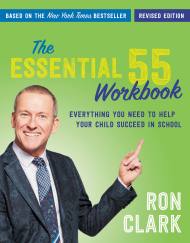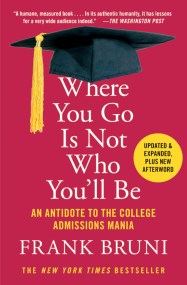Promotion
Use code BEST25 for 25% off storewide. Make sure to order by 11:59am, 12/12 for holiday delivery!
By clicking “Accept,” you agree to the use of cookies and similar technologies on your device as set forth in our Cookie Policy and our Privacy Policy. Please note that certain cookies are essential for this website to function properly and do not require user consent to be deployed.
The One World Schoolhouse
Education Reimagined
Contributors
By Salman Khan
Formats and Prices
- On Sale
- Oct 2, 2012
- Page Count
- 400 pages
- Publisher
- Twelve
- ISBN-13
- 9781455508396
Price
$11.99Price
$15.99 CADFormat
Format:
- ebook $11.99 $15.99 CAD
- Audiobook Download (Unabridged) $27.99
- Trade Paperback $18.99 $24.99 CAD
This item is a preorder. Your payment method will be charged immediately, and the product is expected to ship on or around October 2, 2012. This date is subject to change due to shipping delays beyond our control.
Buy from Other Retailers:
Like many innovators, Khan rethinks existing assumptions and imagines what education could be if freed from them. And his core idea-liberating teachers from lecturing and state-mandated calendars and opening up class time for truly human interaction-has become his life’s passion. Schools seek his advice about connecting to students in a digital age, and people of all ages and backgrounds flock to the site to utilize this fresh approach to learning.
In The One World Schoolhouse, Khan presents his radical vision for the future of education, as well as his own remarkable story, for the first time. In these pages, you will discover, among other things:
- How both students and teachers are being bound by a broken top-down model invented in Prussia two centuries ago
- Why technology will make classrooms more human and teachers more important
- How and why we can afford to pay educators the same as other professionals
- How we can bring creativity and true human interactivity back to learning
- Why we should be very optimistic about the future of learning.
More than just a solution, The One World Schoolhouse serves as a call for free, universal, global education, and an explanation of how Khan’s simple yet revolutionary thinking can help achieve this inspiring goal.
-
"Since its founding in 2006, Sal Khan's project-the Khan academy-has revolutionized our thinking on the potential and promise of unfettered, open-access online education. In his new book The One World Schoolhouse, Khan presents his vision and blueprint for how online technology can, and should, play an integral role in educating communities across the globe, closing the opportunity gap and providing high-quality education for all."Al Gore
-
"In this book, Salman Khan sheds light on how our current education system leaves a gap in every student's core knowledge. He found ways to fill this gap by encouraging differentness, fresh thinking and implementing creativity in the learning process. I strongly believe that all human beings have unlimited creative power. The role of education is to unleash that power. The way he relates the proper goal of education and the natural bent of the child is fascinating. He refers "natural bent" as the particular mix of talents and perspectives that makes each mind unique, and allows minds to be strikingly original. The way Khan portrays the concept of education and the mechanism of learning is revolutionary. This book is a must-read for those providing real education to our children in this new age of technology."Muhammed Yunus, the founder of Grameen Bank, and the 2006 recipient of the Nobel Peace Prize
-
"Sal Khan's passion and innovation is transforming learning for millions of students worldwide. The One World School is a must-read for all who are committed to improving education so students everywhere can gain the skills and knowledge to be successful in school, careers and life."George Lucas, Filmmaker and Founder of The George Lucas Educational Foundation, publisher of Edutopia
-
"I discovered Sal Khan and Khan Academy like most other people - by using these incredible tools with my own kids. Sal Khan's vision and energy for how technology could fundamentally transform education is contagious. He's a true pioneer in integrating technology and learning. I'm happy that, through this book, even more people will be introduced to this ground-breaking innovator."Bill Gates, co-founder & Chairman, Microsoft
-
"The world dreams of education reform, and Sal Khan is delivering. His pioneering video lessons have brought the thrill of learning to millions. In this compelling book, he tells the remarkable story of Khan Academy, and explains the potential in students learning at their own pace and achieving true subject mastery."Chris Anderson, TED Curator
-
"Sal Khan makes a powerful argument for fundamentally rethinking the way we teach and learn. THE ONE WORLD SCHOOLHOUSE illuminates the tremendous potential for online, universaleducation to enable any child, anywhere in the world, to succeed-not only in school, but in shaping our future."Eric Schmidt, Executive Chairman of Google
-
"Sal Khan is changing what we believe is possible in education. Through humor, charm, contagious enthusiasm and quiet brilliance, Sal Khan has made his lessons irresistible. Now, he brings those same gifts to explaining the revolutionary ideas behind Khan Academy. You'll adore this book because it's just like his lessons-approachable, good-hearted, smart, and ultimately profound. The story Sal tells is quite simply the story of what education will become... and indeed IS becoming, thanks to his example and to a generation of inspired teachers and intrepid education entrepreneurs."Ted Mitchell, President and CEO, NewSchools Venture Fund
-
"When you read this book, you will understand how the dignity of each student is addressed by education's visionary, Sal Khan."Ann Doerr
-
"Sal Khan has developed the best and most cost-efficient way to use technology to bring high quality education, creativity and innovation to all countries, including the poorest."Carlos Slim Helu
Newsletter Signup
By clicking ‘Sign Up,’ I acknowledge that I have read and agree to Hachette Book Group’s Privacy Policy and Terms of Use






